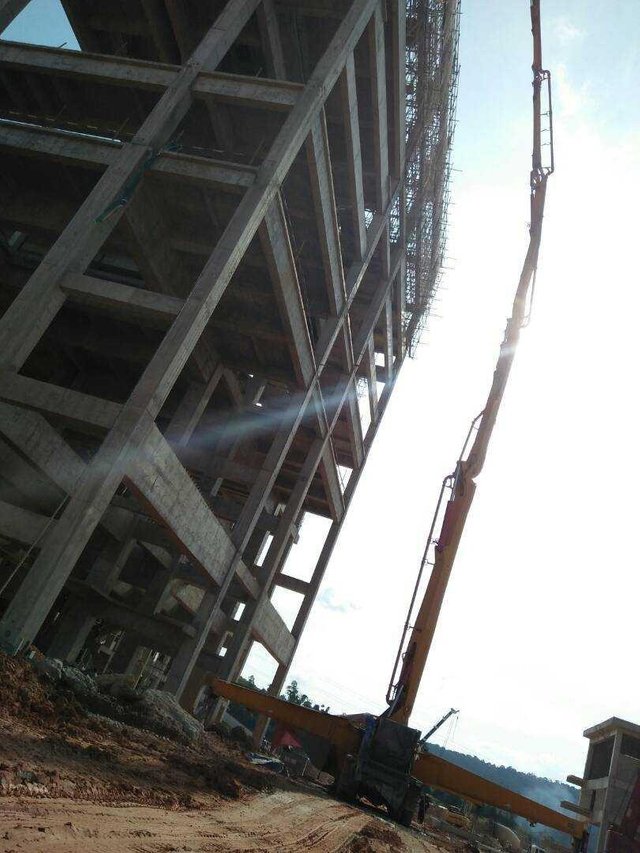
Nature, Industrial Use and Industrial Scale
dimalaysia this building is used for making standardized iron. making iron here is very ideal and sophisticated, some iron girth in my opinion
Iron is the second most abundant metal in the earth's crust (after aluminum) and iron is also the most made alloy of all other metals. Iron ore, which mainly contains oxides, is reduced to iron using carbon (coke) at high temperatures in the furnace. More than 98% of this process is directly used to make steel before it solidifies in a furnace made. Other small parts are used as cast iron and wrought iron.
Use of iron
A small part of iron is used as cast iron. This iron is made up of 92% pure iron and contains carbon (2-5%) which makes it brittle, mixed with a small amount of silicon (1-3%), manganese, phosphorus and sulfur, as impurities or impurities. Cast iron is traditionally used for products such as heating radiators, fireplaces, gutters, sidewalks and lampposts. However, due to the fragility and tendency to rust, cast iron has been replaced with other materials to mostly use this, although cast iron objects are still made for their aesthetic qualities.
Wrought iron contains less than 0.15% carbon and is made by reducing the iron ore in a solid state, and then in the hammer to remove the slag. Because this iron can be bent and hammered to be formed, the iron banya is used for house gates, garden furniture and other decorative products. Now most of the objects are made of steel, and the original wrought iron is no longer produced in large quantities.
Making iron
Iron is produced by iron ore reduction, which is often a mixture of oxides, using carbon, carbon monoxide, and hydrogen. The process of blast furnace is the most commonly used iron ore reduction process, the other technology is used only a small part. This is related to the location where there is a supply of natural gas or the availability of coal. Preparation of iron has two stages, preparation of raw materials, and reduction of iron oxide to iron.
- Preparation of raw materials
Iron is one of the most abundant elements on Earth and the ore generally contains oxygen, silicon, manganese, phosphorus and sulfur. The main minerals of iron ore are haematite (Fe2O3) and magnetite (Fe3O4). Much of the ore is mined in Australia, Brazil, China, India, Russia and the United States.
Most ore contain more than 60% iron and other minerals separated in a blast furnace. The contained ores containing the remaining minerals are crushed and ground into powder and concentrated by floatation. Then rolled into a ball and heated in a furnace to produce a pellet the size of a marble. This process takes place near the mine, to reduce the distance of transportation from waste materials (clay and other silicates).
Concentrated coke or porous rocks, providing carbon for the reduction reaction and also the main fuel used in the furnace. This is made in the factory by heating coal at a temperature of 1200 K in a vacuum for up to 20 hours in a charcoal oven battery. Coke residues, and various volatile compounds dispose out. Gases generated in this process are for example coal gas (especially carbon monoxide and hydrogen), and black tar from which useful compounds such as benzene obtained in the process, are also produced. Coal gas is used as fuel in factories.
Good post. 😀😀
Tolong di voted balek ya.
Downvoting a post can decrease pending rewards and make it less visible. Common reasons:
Submit
oce
Downvoting a post can decrease pending rewards and make it less visible. Common reasons:
Submit
This post has received a 0.64 % upvote from @booster thanks to: @agussal.
Downvoting a post can decrease pending rewards and make it less visible. Common reasons:
Submit
Pakai moil pomp ya..
Downvoting a post can decrease pending rewards and make it less visible. Common reasons:
Submit
hahahahhaha
Downvoting a post can decrease pending rewards and make it less visible. Common reasons:
Submit